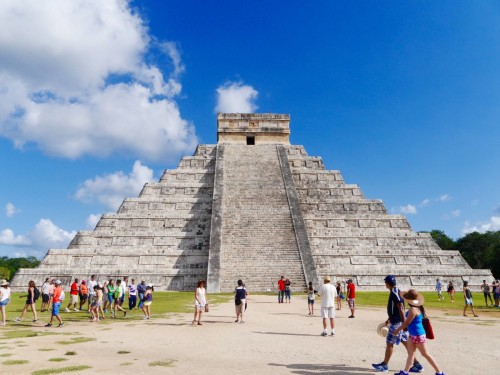The date was determined by Mayan priests
The Mayas, heirs of one of the great pre-Hispanic cultures of ancient Mexico, will start today the year “Seed”, the 5.125 of their cosmogony, with a ritual that coincides with the date of the beginning of their rebellion against the creoles and mestizos in Yucatán, informed “El Universal“.
A ritual of new fire by six priests will mark the end of the year “Fire macaw with solar face” (Guacamaya de rostro solar) and the beginning of “Seed, rebirth in maize and ceiba,” (Semilla: renacimiento del maiz y la ceiba)explained to EFE Eduardo Rivera Coss, director of the Baktún Project, an organization that promotes the ceremony.

The annual transition of the Mayan culture has as its epicenter the Tihosuco community in the state of Quintana Roo, although it is also celebrated in Mérida, the capital of the state of Yucatán.
“The ceremony is simple but symbolic, the fire is lit by the priest in company with others who invoke the ‘charger of time,’ a god who will govern the climate to know how the crops will grow,” said Rivera Coss.
He explained that the date was decided by Mayan priests, who after the end of the cycle that marked the year 2012, decided that in 2015 will restart the count of Mayan time which was interrupted by the Conquest of Mexico by the Spaniards in 1521.
The consensus was reached based on the writings of the Spanish friar Diego de Landa, in what constitutes a “historic rescue decision,” said Rivera.
“Seed, rebirth in maize and ceiba,” is based on the Haab calendar, one of the two which, with the Tzolk’in, is used in Mayan cosmogony.
Recognized for their astronomical knowledge, the Mayas used recurring cycles based on the movements of the Sun, Moon, and planets to measure time in units that they called baktún (the longest unit), uinal (month), and k’in (day) in addition to the Haab and Tzolk’in calendars.
Rivera Coss said that according to the cosmogony, the Mayan culture has had five stages, currently living the fifth, and the count starts since its first existence, according to which will start the year 5.125 from the creation.
The Haab and Tzolk’in calendars were used by the Mayas to measure time together with another known as a “long count,” which incorporated the other two, allowing them to have a chronology of mythological and historical events.
The Mayan culture flourished in southeastern Mexico, in the states of Yucatán, Tabasco, and Chiapas, as well as Guatemala, Belize, and Honduras from 2.000 BC in itsPreclassic period, from 200 BC to 900 AD in theClassic period, and from 950 to 1539 BC in the Postclassic period.
Source: http://www.eluniversal.com.mx/

